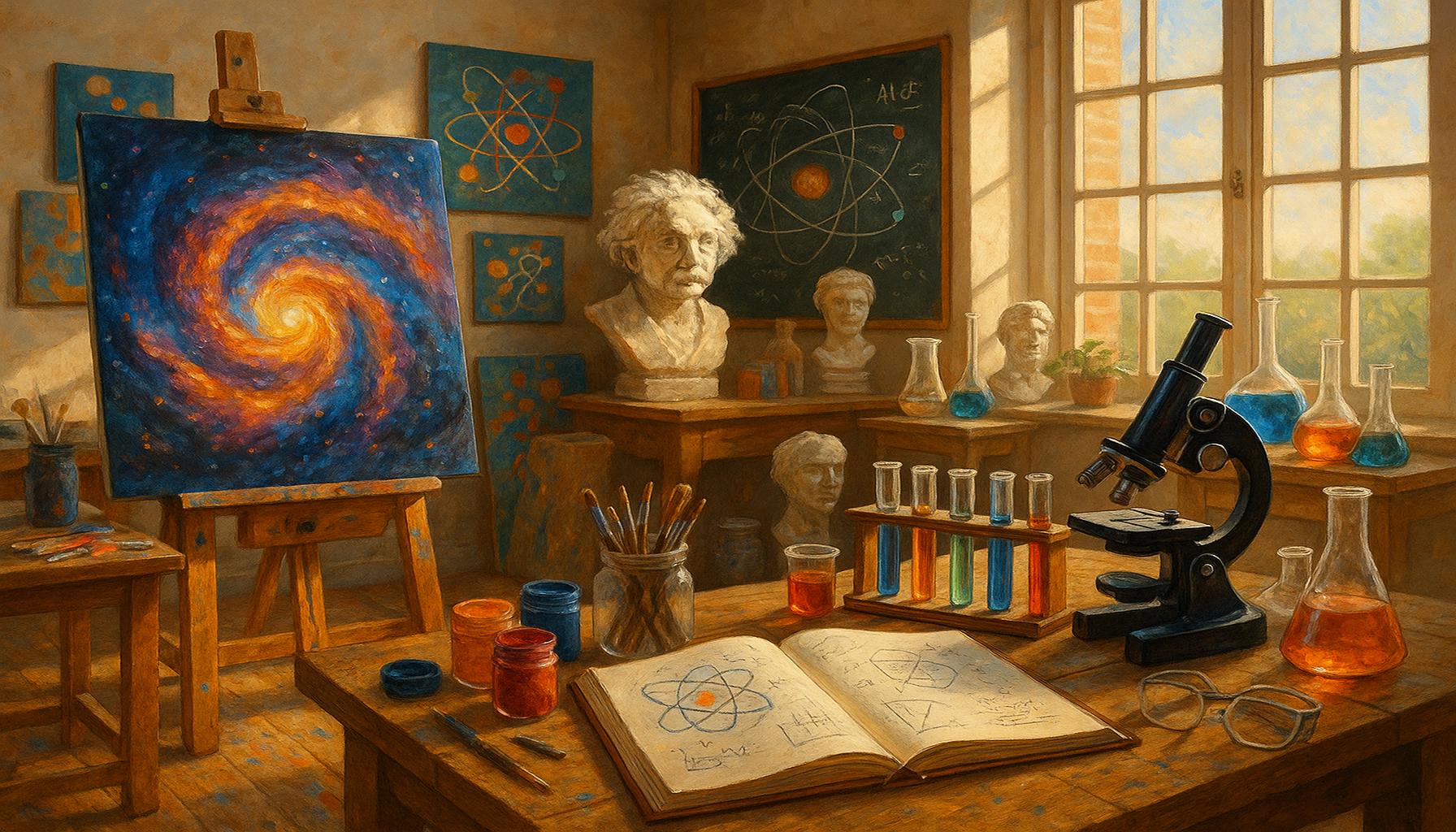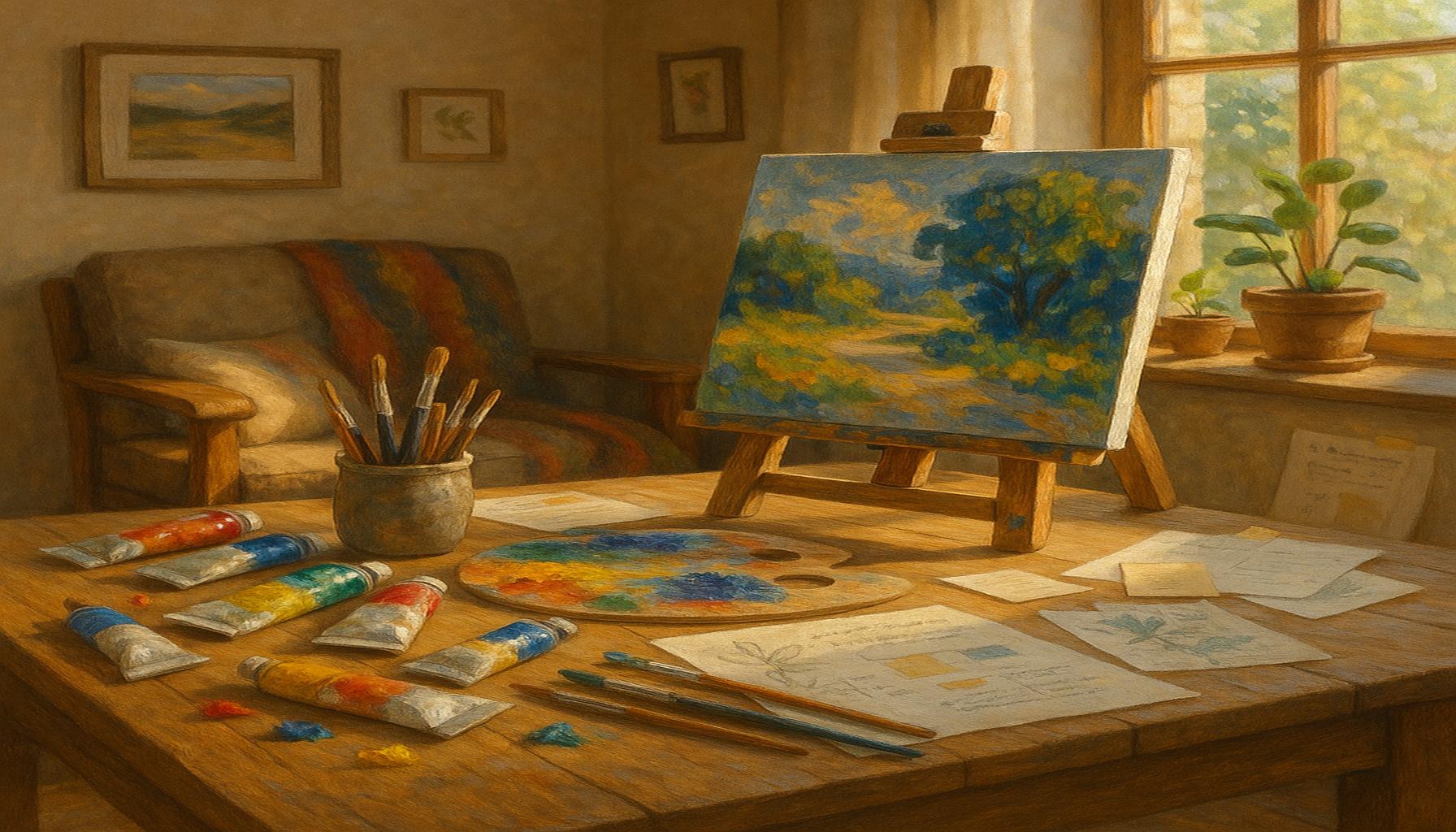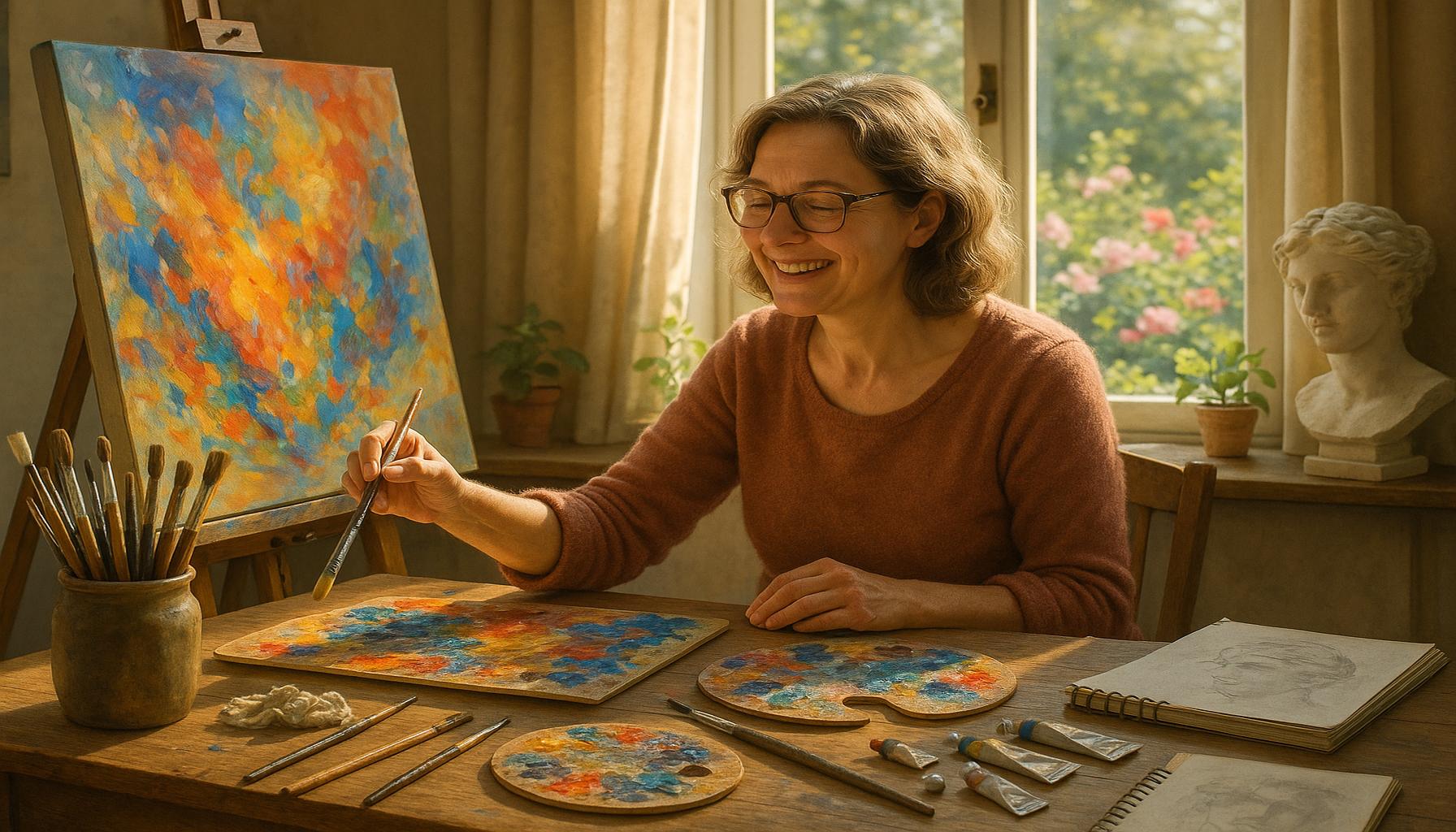The evolution of artistic techniques: from traditional to digital and its impact on contemporary hobbies
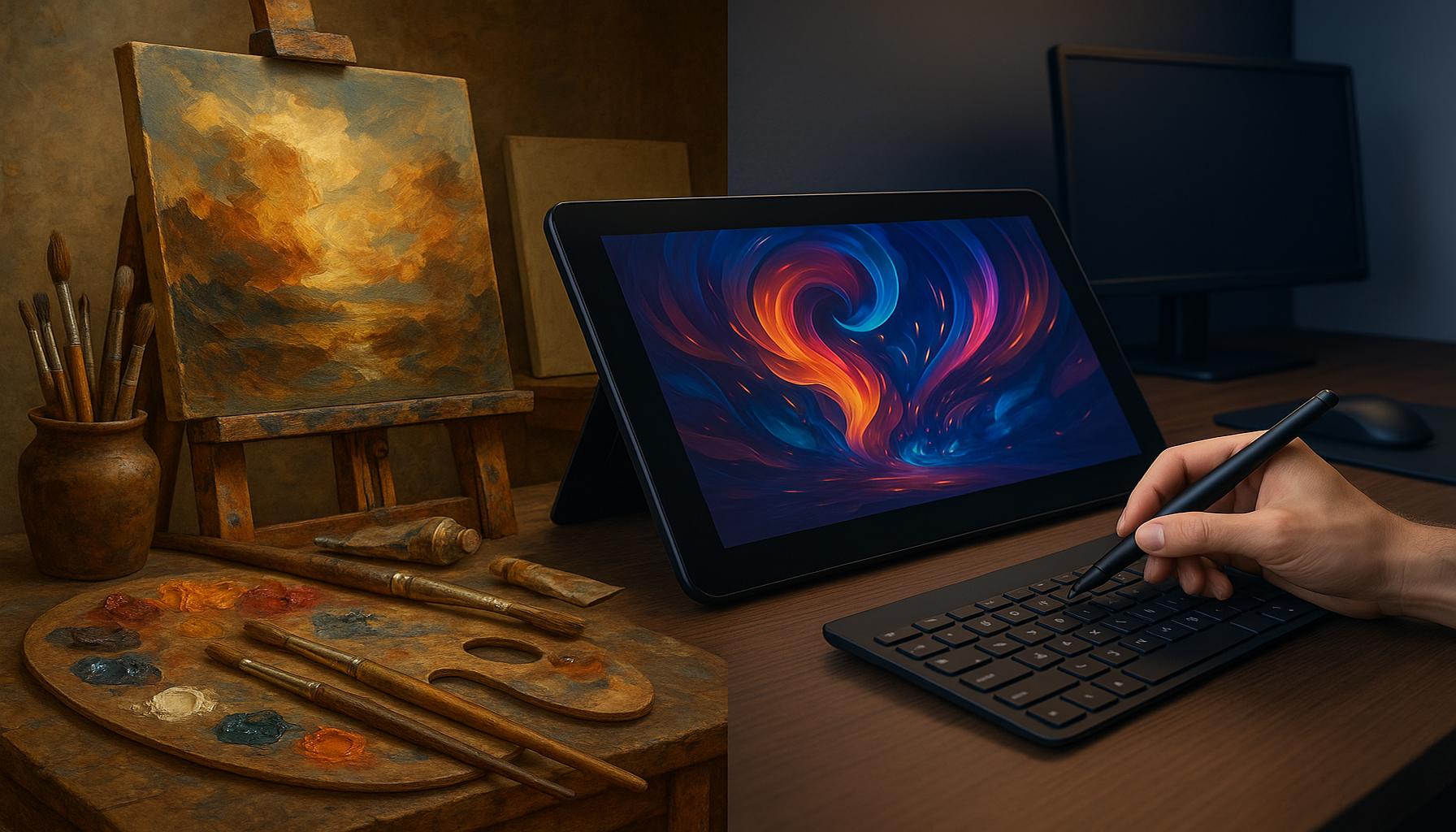
Artistic Evolution Through Time
The world of art is in a constant state of transformation. As we evolve, so do our artistic techniques. From the delicate strokes of a brush on canvas to the intricate patterns created by digital software, the methods artists use to express themselves have shifted dramatically over the decades. This evolution not only reflects societal changes but also shapes the way we perceive and engage with art today.
One of the earliest milestones in this artistic journey is the use of natural pigments in ancient cave paintings. These early artists utilized the earth’s raw materials, creating images that not only depicted their surroundings but also conveyed spiritual beliefs and narratives. The transition from these monochromatic representations to the vibrant colors observed in Egyptian art exemplified the advancement in material use and craftsmanship.
Moving forward in time, the Renaissance era emerged as a pivotal moment in the art world. Artists like Leonardo da Vinci and Michelangelo pioneered the use of oil paints and perspective techniques. The introduction of oil paints allowed for richer textures and more dynamic color palettes, while the understanding of perspective brought a three-dimensional quality to art that had never been seen before. This period emphasized humanism and detailed realism, which set standards for artistic endeavors for centuries to come.
Another significant shift came with the emergence of photography in the 19th century. Initially regarded as a mere tool for documentation, photography soon found its place within the art community. Artists like Alfred Stieglitz and Ansel Adams challenged traditional notions of art, showcasing photography’s ability to convey emotion and provoke thought. This new medium opened doors for experimentation and became a powerful means of storytelling.
With the technological growth of the 21st century, the rise of digital tools such as Adobe Photoshop and Procreate has revolutionized artistic creation. These platforms allow artists to explore their creativity in unprecedented ways. For instance, artists can manipulate images, create intricate illustrations, and even delve into 3D modeling with ease. This technology-driven art form has inspired a new generation of hobbyists and professionals alike, drawing them into the expansive realm of digital art.
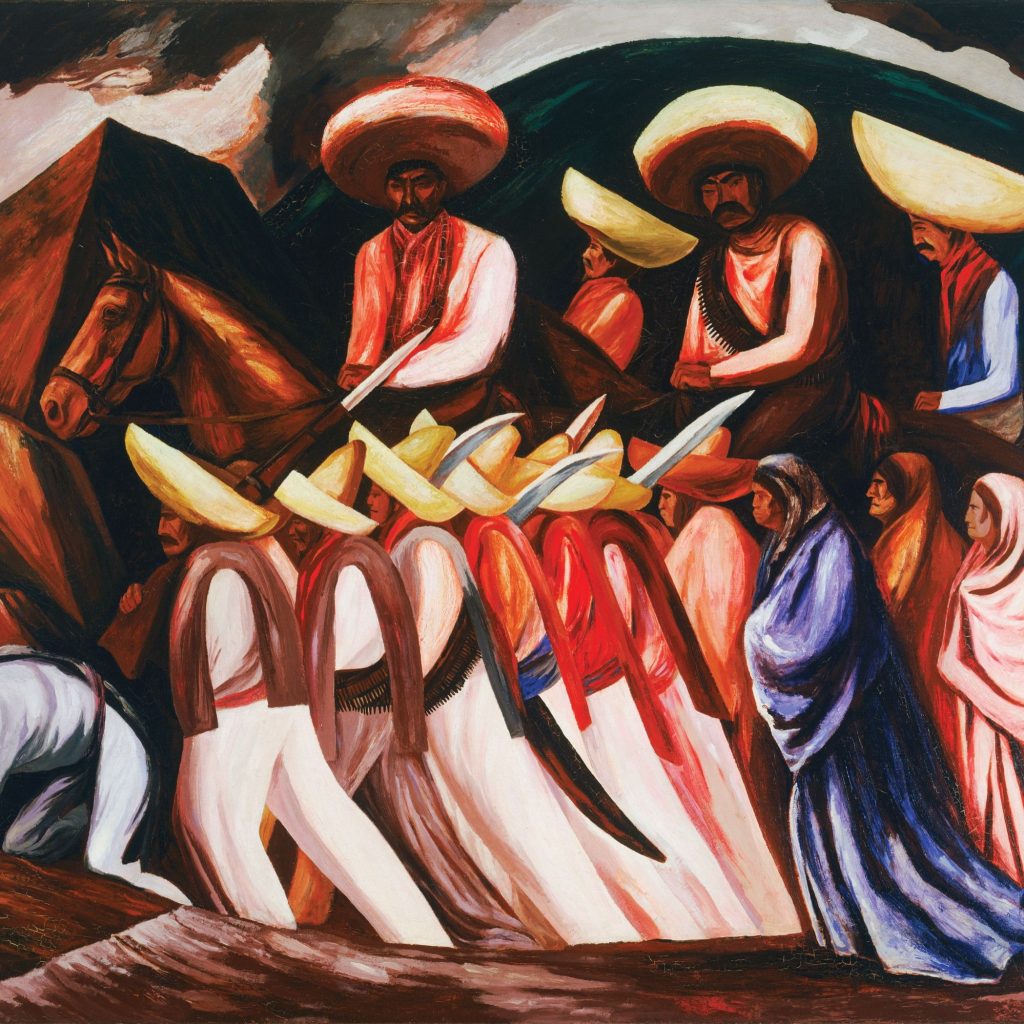
Moreover, the rise of social media platforms has further democratized the art world. Creators can showcase their works to a global audience at the click of a button, fostering a community of artists and art enthusiasts. Platforms like Instagram and Pinterest have become digital galleries, where emerging artists can gain visibility and engage with their followers without needing to pass through traditional gatekeepers.
These milestones not only illustrate the changing landscape of artistic expression but also demonstrate their impact on contemporary hobbies. Many individuals are now exploring art in ways that were previously unimaginable, driven by technology. Hobbies like digital painting and graphic design have gained popularity, allowing creators to experiment without limitations. The accessibility of artistic tools and online tutorials has further empowered individuals to create, share, and learn.
As we delve deeper into this evolution, we will uncover how traditional art’s essence persists amid the digital wave, influencing contemporary practices and engaging a broader audience with diverse hobbies. This journey through time reveals an intricate tapestry where art and technology meet, illustrating how they can coexist and enhance one another, ultimately enriching our cultural landscape.
DISCOVER MORE: Click here to learn how drawing can enhance your well-being
From Canvas to Code: The Transition of Artistic Techniques
The journey of artistic expression is a tale of innovation and adaptation. As we venture into the 21st century, technology has profoundly altered the landscape of art, breaking barriers that were once established by tradition. While the techniques of ancient art laid the foundation, the contemporary era boasts a fascinating fusion of traditional methods and digital innovations.
One cannot discuss the evolution of artistic techniques without recognizing the strength and wisdom of traditional mediums. Paint on canvas, sculpting with clay, and etching metal have been revered forms of artistic expression for centuries. Artists worldwide have honed their skills, perfecting the use of materials such as charcoal, watercolor, and pastels. For instance, the unmistakable fluidity of watercolor painting can evoke emotions that resonate deeply with viewers, offering a contrast to the more rigid structures found in digital art. Traditional artists often pursue mastery in these classical techniques, which serve not only as means of creation but as methods of preserving cultural heritage.
However, the digital revolution has ushered in an exciting new era. Advanced software programs enable artists to recreate textures and colors with remarkable ease, often blurring the lines between reality and imagination. A few notable digital techniques include:
- Digital Painting: Artists can use styluses and graphics tablets to create vivid artwork that mimics traditional painting methods while offering unparalleled flexibility and corrections.
- Vector Art: This technique allows for scalable graphics, perfect for various applications from web design to merchandise, ensuring high quality regardless of size.
- 3D Modeling: Software like Blender and Maya provides tools for creating intricate 3D designs, expanding the boundaries of sculpture and architecture to a virtual space.
The synergy between these traditional and digital techniques has inspired many artisans to explore hybrid forms of art. For instance, some artists might start with a charcoal sketch on paper, then digitize it to apply colors and effects through software. This blended approach showcases the beauty of merging age-old methods with modern technology, illustrating how both can coalesce to yield innovative creations.
Further enhancing the reach of these artistic techniques is the impact of social media. Platforms like TikTok and YouTube have birthed a new generation of art tutorials, where aspiring artists are drawn into the world of creation through easily accessible lessons. This trend has not only democratized art education but has also fostered a community climate, where feedback and collaboration thrive. As more people gravitate towards hobbies such as digital illustration and graphic design, the influx of participants has transformed how art is perceived in contemporary society.
In this environment of constant creation and sharing, the question arises: how does this blend of traditional and digital methods influence the art hobbyist? As we continue to delve into this topic, we will explore how the integration of technology into artistic processes has not only expanded creative possibilities but has also shaped a new generation of art enthusiasts, providing them with unique tools for self-expression.
| Category | Description |
|---|---|
| Traditional Techniques | Includes methods like painting, drawing, and sculpture. |
| Digital Techniques | Encompasses tools such as graphic design software and digital painting. |
| Hybrid Approaches | Combines both traditional and digital methods, tapping into the strengths of each. |
| Accessibility | Digital tools lower entry barriers for art creation, making it accessible to diverse audiences. |
| Innovation | Digital mediums allow artists to explore innovative ideas and techniques previously impossible. |
The transition from traditional to digital artistic techniques has drastically reshaped the landscape of art and fine crafts. Traditional art forms require a deep mastery of materials like oil paints, charcoal, and clay, demanding hours of practice and dedication. In contrast, digital platforms offer unparalleled flexibility with tools that can emulate these traditional mediums while introducing capabilities for instant editing and experimentation.This evolution has not only redefined the artist’s toolkit but also expanded the audience enjoying various forms of art. Many contemporary hobbies now utilize digital techniques — from graphic novels to digital photography — inviting everyone to participate, regardless of their artistic background. As a result, individuals are encouraged to tap into their creativity, explore their passions, and share their work with broader communities, all thanks to the digital renaissance in art. Such shifts have cultivated forums and platforms where artists can connect, collaborate, and inspire each other in unprecedented ways.In this exciting era, the diverse juxtaposition of traditional and digital methods continually influences contemporary art forms, sparking innovative projects and cross-disciplinary collaborations that redefine artistic boundaries.
EXPLORE MORE: Click here to dive into the impact of music on creativity
The Rise of Artistic Hobbies in the Digital Age
The intertwining of traditional and digital art techniques has not only transformed how art is created but has also significantly impacted the hobbies of countless individuals across the United States. With the accessibility of digital tools and the vast array of online resources, art has become a more popular pastime than ever before. According to a study by the National Endowment for the Arts, participation in artistic hobbies has surged, with millions of Americans engaging in activities like digital painting, photography, and graphic design.
One striking trend is the increase in digital art communities, which have boomingly proliferated over the last decade. Platforms like DeviantArt, ArtStation, and Instagram provide artists with opportunities to showcase their work, receive constructive critiques, and collaborate with like-minded individuals. This accessibility has democratized art, enabling users from diverse backgrounds to share their interpretations of the world. Notably, the hashtag culture surrounding digital art allows for broader visibility, fostering an environment where budding artists can gain recognition and feedback.
Moreover, the emergence of art apps tailored to mobile devices has revolutionized how enthusiasts engage with their artistic skills. Applications such as Procreate, Adobe Fresco, and Clip Studio Paint offer powerful tools within reach of a smartphone or tablet, allowing individuals to create on the go. The convenience of these mobile apps encourages users to experiment with different techniques, styles, and themes, further enhancing their artistic journey. In a society that values immediacy, having art supply essentials in the palm of one’s hands has initiated an exploration rush among novices and experienced artists alike.
In addition to mobile applications, the advent of virtual reality (VR) is pushing the boundaries of what art can be. Programs like Tilt Brush and Oculus Medium allow users to “paint” in a three-dimensional space, creating immersive art experiences. This technology not only opens doors to innovative dimensions of creativity but also allows hobbyists to interact with art in groundbreaking ways. VR art has sparked interest among individuals who may never have considered themselves artists, appealing to those eager for novel experiences or interactive art forms.
As art continues to evolve with these technological advancements, the role of online tutorials and instructional videos cannot be overlooked. Websites such as Skillshare and Udemy host a myriad of courses dedicated to various artistic techniques, enabling learners to grasp concepts at their own pace. This method of learning removes barriers to education, providing aspiring artists with knowledge and skills once reserved for those attending formal art schools. The sheer availability of affordable content has empowered a generation to explore their creativity without the constraints of geography or financial barriers.
Finally, the cultural shift towards embracing creativity as a vital component of mental health and wellness has seen hobbies flourish in the realm of art. Research indicates that engaging in creative activities can alleviate stress, boost self-esteem, and foster mindfulness. The blend of traditional techniques with digital platforms allows individuals to tailor their artistic pursuits to their unique preferences, resulting in a more personalized and fulfilling hobby experience.
As we explore further, it becomes evident that the evolution of artistic techniques—with its rich tapestry of traditional and digital influences—has not only shaped the art landscape but has ignited a profound passion for creativity within contemporary society. This artistic renaissance is opening doors for new voices and expressions, inviting individuals from all corners of life to embark on their own artistic journeys.
DISCOVER MORE: Click here to dive deeper
Conclusion: A New Era of Artistic Expression
In conclusion, the evolution of artistic techniques—from traditional forms to innovative digital channels—has fundamentally reshaped not only how art is created but also how it is perceived and practiced as a hobby. As advancements in technology make artistic tools more accessible, both novice creators and seasoned professionals alike are empowered to explore their creativity in ways once thought impossible.
The rise of digital platforms and applications has not only democratized art but has also fostered a vibrant community where interaction, feedback, and collaboration thrive. With millions engaging in artistic hobbies, the cultural landscape has shifted, making art a crucial part of communal and individual well-being. This shift underscores the importance of art as a medium for personal expression and connection, significantly contributing to mental health and overall life satisfaction.
Moreover, as we gaze into the future, the continued blending of digital environments with traditional techniques indicates exciting possibilities for art creation. From VR experiences to mobile art applications, the boundaries of creativity are expanding, inviting an even broader spectrum of voices and experiences into the artistic dialogue. It is essential for both aspiring artists and enthusiasts to embrace this renaissance, harnessing the tools available to redefine their artistic narratives.
Ultimately, the transformation of artistic methods encourages us to not only celebrate the diversity of artistic expression but also to contemplate how these changes are influencing contemporary hobbies. As the lines between the traditional and digital continue to blur, we are left with an inspiring invitation to explore and redefine our artistic passions in an ever-evolving landscape.
